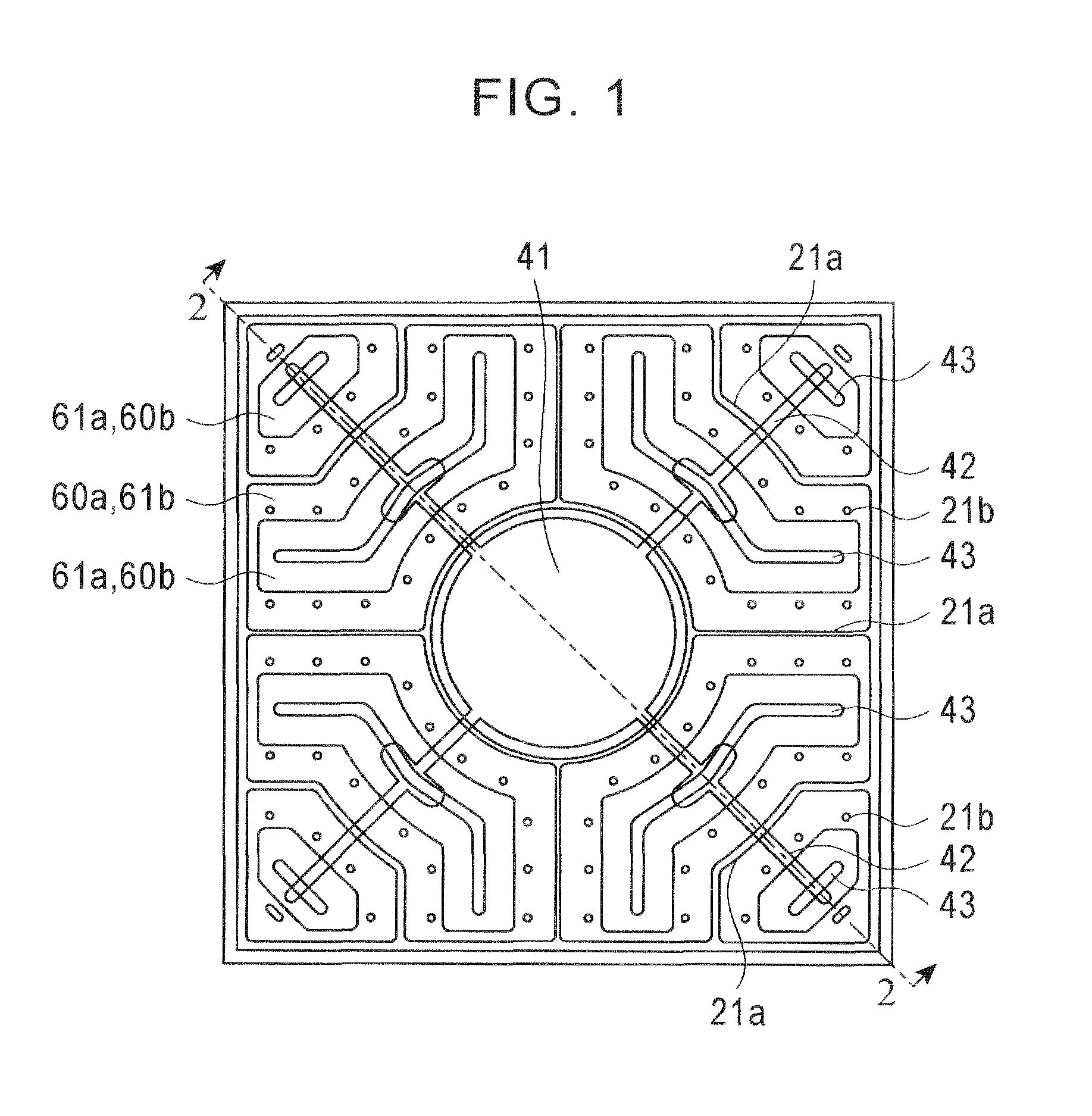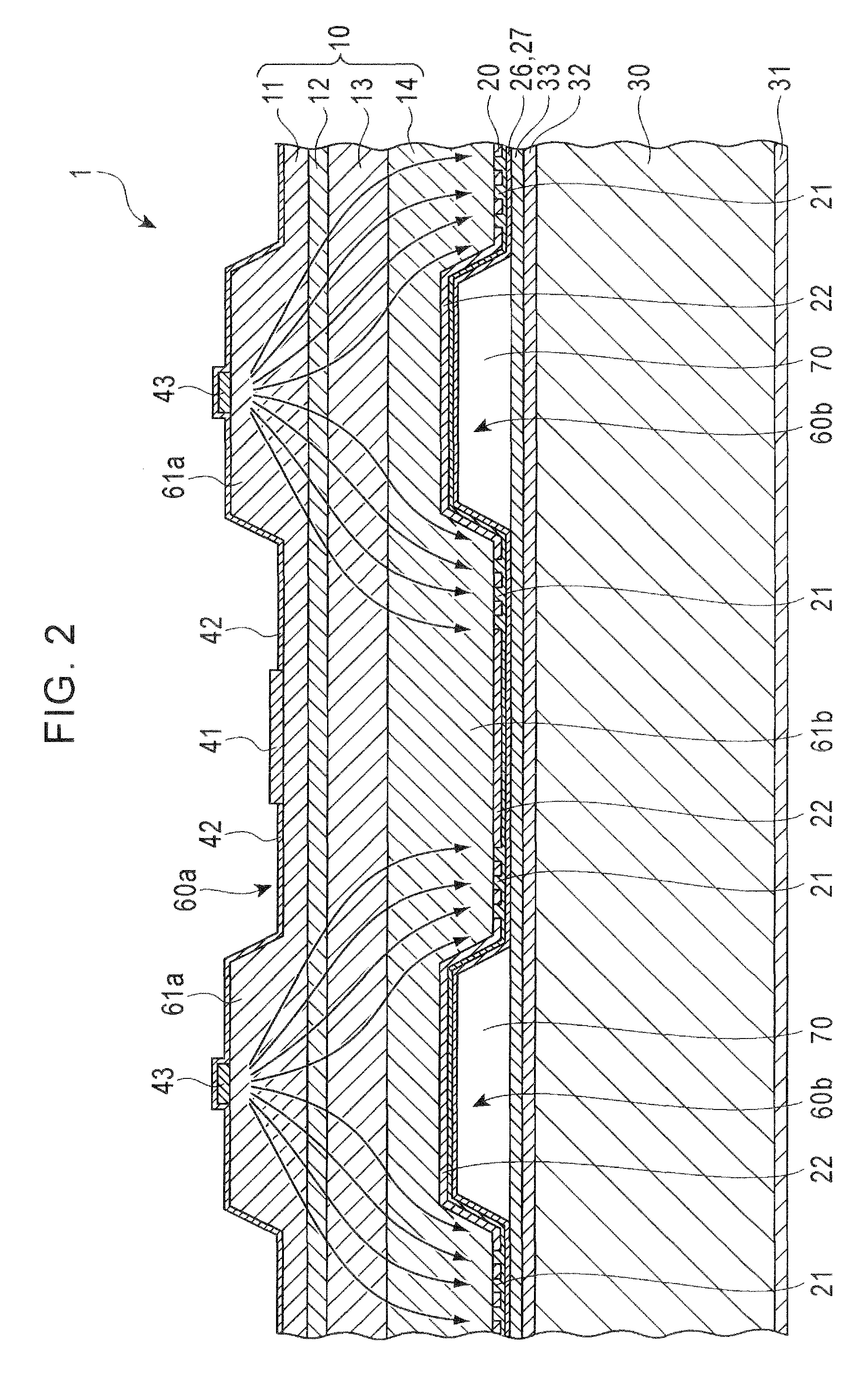Semiconductor light emitting device
a technology of semiconductor film and light-emitting device, which is applied in the direction of semiconductor film, basic electric elements, electrical equipment, etc., can solve the problems of reducing light extraction efficiency, difficult to suppress the self-absorption of light propagating inside the semiconductor film without, and reducing the light extraction efficiency. , to achieve the effect of improving light extraction efficiency and suppressing the self-absorption of light propagating in the semiconductor film
- Summary
- Abstract
- Description
- Claims
- Application Information
AI Technical Summary
Benefits of technology
Problems solved by technology
Method used
Image
Examples
Embodiment Construction
[0028]Embodiments of the present invention will be described with reference to the accompanying drawings. In the figures cited below, the same reference numerals are used to denote substantially the same or equivalent constituents or parts.
[0029]FIG. 1 is a plan view showing the configuration of a semiconductor light emitting device 1 according to an embodiment of the present invention, and FIG. 2 is a cross-sectional view taken along line 2-2 in FIG. 1.
[0030]The semiconductor light emitting device 1 has a so-called stuck-together structure where a semiconductor film 10 and a support substrate 30 are joined via a reflecting film 20. The semiconductor film 10 is configured with an n-type clad layer 11, a light emitting layer 12, a p-type clad layer 13, and a p-type contact layer 14 that are laid one over another in that order from the light-extraction-surface side. The total thickness of the semiconductor film 10 is, for example, 6 μm, and the outline of the principal surface is, for...
PUM
 Login to View More
Login to View More Abstract
Description
Claims
Application Information
 Login to View More
Login to View More - R&D
- Intellectual Property
- Life Sciences
- Materials
- Tech Scout
- Unparalleled Data Quality
- Higher Quality Content
- 60% Fewer Hallucinations
Browse by: Latest US Patents, China's latest patents, Technical Efficacy Thesaurus, Application Domain, Technology Topic, Popular Technical Reports.
© 2025 PatSnap. All rights reserved.Legal|Privacy policy|Modern Slavery Act Transparency Statement|Sitemap|About US| Contact US: help@patsnap.com



